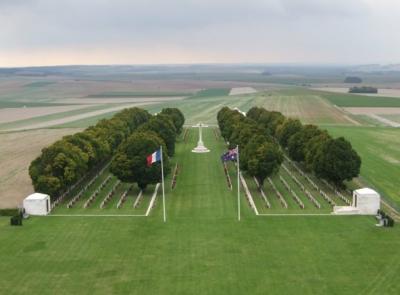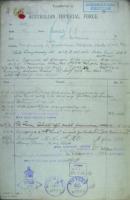
Nat Gould
His life and books
John Gould 1882-1916
| John Gould |
|---|
| Born: 1882 Victoria, Australia |
| Died: 1916 Pozières, France |
| Father |
| Charles Gould 1853-1889 |
| Mother |
| Grace Waters 1853-1889 |
| Siblings |
| Charles Henry Gould 1876-1925 |
| Joseph Gilbert Gould 1878-1946 |
| William James Gould 1880-1965 |
| George Gould 1882-1926 |
| Spouse |
| Children |
John Gould was born in 1882 in Victoria, Australia.
He was the son of Charles Gould 1853-1889 and his wife née Grace Waters 1853-1889, and the grandson of William Gould 1819-1876 who lived at Pilsbury Grange until he married and emigrated to Australia in 1830.
John Gould spent most of his early life at Commurra, Lucindale with an uncle, but went to Pingelly in Western Australia at the turn of the century. He left there in 1915, having joined the 6th reinforcements to the 16th Battalion of the Australian Imperial Force in 1915. Private John Gould fought on Gallipoli, and was from there invalided to London, where he spent months in hospital. On his return to Egypt he was again in hospital for some time, and on recovering he was transferred to the 48th Battalion, one of the last to leave Egypt for France (1).
The 48th Batallion fought on the Western Front in France on the Somme and the Pozières Ridge. The Battalion was raised in Egypt on 16 March 1916 as part of the doubling of the AIF. Roughly half its new recruits were Gallipoli veterans from the 16th Battalion, and the other half fresh reinforcements from Australia. Reflecting the composition of the 16th, the men of the new battalion hailed mainly from regional South Australia and Western Australia. It formed part of the 12th Brigade of the 4th Australian Division. The battalion endured what was said to be heaviest artillery barrage ever experienced by Australian troops and suffered 598 casualties. A diorama at the Australian War Memorial depicts the battalion's experience at Pozieres (2).
Private John Gould No. 2293 died on 6 August 1916 at Pozières, and was buried in Villers Bretonneux Military Cemetery in Picardy, France. His name is also recorded on the War Memorial at Pingelly in Western Australia.

Villers Bretonneux Cemetery
(1) Trove 9 September 1916, quoting the Narracoorte Herald.
(2) Before it had recovered from the trials of Pozières, the 48th was also required to defend ground captured during the battle of Mouquet Farm. 1917 was also a trying year for the 48th Battalion. In two of the major battles in which it fought (the first battle of Bullecourt in France, and the battle of Passchendaele in Belgium) it was forced to withdraw with heavy casualties as the result of poor planning and inadequate support. On neither occasion did the battalion fail for want of courage or skill amongst its own troops.
Like most AIF battalions, the 48th rotated in and out of the front line through the winter of 1917-1918. In the spring of 1918 it played a crucial role in blocking the main road into Amiens when the Germans launched their last great offensive. When it came time for the Allies to launch their own offensive, the 48th Battalion took part in the battle of Amiens between 8 and 10 August, and the battle to seize the Hindenburg line between 18 and 20 September. This was their last battle of the war. The 48th Battalion was disbanded on 31 March 1918. The Story of a Battalion: 48th Battalion of the AIF by William Devine (1919).

